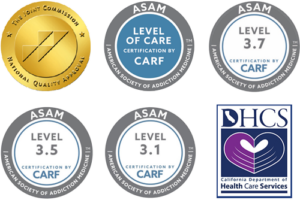How Long Does Percocet Stay in Your System?
Published on: May 31, 2024 | Updated on: December 12, 2025
If you’ve ever asked, “how long does Percocet stay in your system,” you’ve come to the right place for details.
Percocet, the brand name for a prescription pain medication, is often prescribed for pain relief. Understanding how long Percocet stays in your system is crucial for both medical and personal reasons, including managing dosage, avoiding potential interactions with other substances, and ensuring safety during activities that require full cognitive function.
In this article, we’ll explore the duration Percocet remains detectable in your body, factors that influence its metabolism, and implications for both short-term use and long-term liver health.
What is Percocet?
Percocet is a prescription medication that combines two active ingredients: oxycodone, an opioid pain reliever, and acetaminophen, a non-opioid pain reliever and fever reducer. Oxycodone works by altering the way the brain and nervous system respond to pain, while acetaminophen helps to reduce fever and enhance the pain-relieving effects of oxycodone.
Percocet is typically prescribed to manage moderate to severe pain that cannot be controlled by other pain medications. Due to its opioid content, Percocet has a potential for abuse and addiction, and its use is carefully monitored by healthcare providers.
What is Percocet Used For?
Percocet is prescribed to manage moderate to severe pain associated with various conditions. Some common ailments and situations for which Percocet may be prescribed include:
- Post-surgical pain: To manage pain following surgeries, such as orthopedic procedures, abdominal surgeries, or dental surgeries.
- Injury-related pain: For acute pain resulting from fractures, sprains, or other significant injuries.
- Chronic pain conditions: In certain cases, for chronic pain conditions that do not respond to other pain management strategies, such as severe arthritis or lower back pain.
- Cancer-related pain: To help alleviate pain in cancer patients, particularly those undergoing treatments like chemotherapy, radiation, or surgical interventions.
- Severe musculoskeletal pain: For conditions like severe muscle strains or herniated discs that cause significant discomfort.
Percocet is typically prescribed when other, less potent pain relievers are insufficient to manage the patient’s pain effectively. Due to its potential for dependency and abuse, it is used under strict medical supervision.
How Does Percocet Work?
Percocet’s mechanism of action involves the combined effects of its two active ingredients, oxycodone and acetaminophen, on the human body:
- Oxycodone:
- Opioid Receptor Activation: Oxycodone is an opioid agonist, which means it binds to and activates opioid receptors (primarily the mu-opioid receptors) in the brain and spinal cord. These receptors are part of the central nervous system’s pathway for processing pain signals.
- Pain Signal Modulation: By binding to these receptors, oxycodone inhibits the transmission of pain signals, altering the perception of pain. This leads to a reduction in the sensation of pain and an increase in pain tolerance.
- Euphoria and Sedation: In addition to pain relief, the activation of opioid receptors can produce feelings of euphoria and sedation, which can contribute to the drug’s potential for abuse and addiction.
- Acetaminophen:
- Prostaglandin Inhibition: Acetaminophen’s exact mechanism of action is not entirely understood, but it is known to inhibit the production of prostaglandins in the brain. Prostaglandins are chemicals that promote inflammation, pain, and fever.
- Antipyretic and Analgesic Effects: By reducing prostaglandin synthesis, acetaminophen lowers fever and enhances the pain-relieving effects of oxycodone. It works primarily in the central nervous system to increase the pain threshold.
The combination of these two components in Percocet provides a synergistic effect, offering more effective pain relief than either component alone. The oxycodone component addresses moderate to severe pain by modulating pain signals at the receptor level, while acetaminophen helps by reducing fever and augmenting the analgesic effect through a different biochemical pathway.
Are There Different Kinds of Percocet?
there are different formulations of Percocet, primarily based on the dosage strengths of its two active ingredients, oxycodone and acetaminophen. Unlike the drug oxycodone, which comes in both immediate-release (IR) and extended-release (ER) formulations, Percocet is typically available only in immediate-release forms. The various types of Percocet differ in the ratio of oxycodone to acetaminophen. Some common dosage strengths include:
- Percocet 2.5/325: Contains 2.5 mg of oxycodone and 325 mg of acetaminophen.
- Percocet 5/325: Contains 5 mg of oxycodone and 325 mg of acetaminophen.
- Percocet 7.5/325: Contains 7.5 mg of oxycodone and 325 mg of acetaminophen.
- Percocet 10/325: Contains 10 mg of oxycodone and 325 mg of acetaminophen.
These formulations allow healthcare providers to tailor the dosage to the specific pain management needs of the patient, balancing effective pain relief with minimizing the risk of side effects and potential acetaminophen toxicity.
Immediate-Release (IR) Oxycodone:
Immediate-release oxycodone is a separate formulation that contains only oxycodone without acetaminophen. It is available in various dosages and is designed to provide rapid pain relief. IR oxycodone is typically used for the management of acute pain or breakthrough pain in patients who are already on a long-term pain management regimen.
Extended-Release (ER) Oxycodone:
Extended-release oxycodone is formulated to release oxycodone gradually over a longer period, usually 12 to 24 hours. This type of oxycodone is used for managing chronic pain that requires continuous, around-the-clock treatment. It is not combined with acetaminophen and is intended for patients who need long-term pain control rather than immediate relief.
There are also generic versions of this and other similar opioids; your healthcare professional can help you understand the different formulations and applications.
Metabolic Processes to Eliminate Percocet and Other Drugs
Percocet is eliminated from the body through several processes involving its two active ingredients, oxycodone and acetaminophen, which are metabolized and excreted differently:
- Oxycodone:
- Metabolism: Oxycodone is primarily metabolized in the liver by enzymes such as cytochrome P450 3A4 (CYP3A4) and cytochrome P450 2D6 (CYP2D6). These enzymes convert oxycodone into several metabolites, including noroxycodone and oxymorphone, both of which have some analgesic activity.
- Excretion: After metabolism, oxycodone and its metabolites are excreted by the kidneys in the urine. A small amount of unchanged oxycodone is also excreted in the urine.
- Half-life: The elimination half-life of oxycodone is approximately 3.5 to 5.5 hours, but this can vary based on individual factors such as liver function and genetic differences in metabolism.
- Acetaminophen:
- Metabolism: Acetaminophen is also metabolized in the liver, primarily through conjugation with glucuronic acid and sulfuric acid to form non-toxic metabolites. A small fraction is metabolized by cytochrome P450 enzymes (mainly CYP2E1) to form a reactive intermediate, N-acetyl-p-benzoquinone imine (NAPQI), which is then detoxified by conjugation with glutathione.
- Excretion: The metabolites of acetaminophen, including the glucuronide and sulfate conjugates, are excreted in the urine.
- Half-life: The elimination half-life (sometimes known as the drug’s half life) of acetaminophen is approximately 2 to 3 hours in healthy individuals but can be prolonged in cases of liver dysfunction or overdose.
Factors that can influence the elimination of Percocet include liver and kidney function, age, genetic factors affecting metabolism, other medications being taken (which can induce or inhibit metabolic enzymes), and overall health status. Due to these variations, the detection window for Percocet and its metabolites in the body can differ among individuals. In fact, it may stay in your system longer than the numbers above indicate; the percocet half life (the length of time where half the drug remains in the bloodstream) can vary greatly.
Opioid Addiction: Abuse of Percocet and Similar Opioid Drugs
Percocet and similar opioid drugs are commonly abused due to their ability to produce euphoria, relaxation, and pain relief. Opioid abuse can lead to serious health consequences, including addiction, overdose, and even death. Here are some key points about the abuse of Percocet and other opioid drugs:
Reasons for Abuse:
- Euphoria: The opioid component, oxycodone, activates the brain’s reward system, producing feelings of euphoria and well-being. This can lead to recreational use and abuse.
- Pain Relief: Some individuals may start abusing opioids after being prescribed them for legitimate pain management, finding the relief they provide compelling enough to continue use beyond the prescribed period.
- Tolerance and Dependence: Regular use of opioids can lead to tolerance, where higher doses are needed to achieve the same effects. Dependence can also develop, with individuals experiencing withdrawal symptoms if they stop using the drug.
Forms of Abuse:
- Taking Higher Doses: Some individuals may take higher doses than prescribed to enhance the effects.
- Crushing and Snorting or Injecting: To achieve a more immediate and intense effect, some people may crush Percocet tablets and snort or inject the powder.
- Polydrug Use: Combining opioids with other substances, such as alcohol or benzodiazepines, to amplify the effects, which significantly increases the risk of overdose.
Health Risks and Consequences:
- Addiction: Opioid addiction is a chronic, relapsing disorder characterized by compulsive drug seeking and use, despite harmful consequences.
- Overdose: Opioid overdose can lead to life-threatening respiratory depression. Symptoms include shallow breathing, extreme drowsiness, and loss of consciousness. Naloxone (Narcan) can reverse an opioid overdose if administered promptly.
- Infections: Injecting opioids can lead to infections, including HIV, hepatitis, and bacterial infections.
- Social and Legal Problems: Abuse of prescription opioids can result in legal issues, job loss, and strained relationships.
Prevention and Treatment:
- Prescription Monitoring: Healthcare providers are increasingly using prescription monitoring programs to track opioid prescriptions and identify potential abuse.
- Education and Awareness: Educating patients about the risks of opioid use and proper medication disposal can help prevent abuse.
- Treatment Programs: For those struggling with opioid addiction, various treatment options are available, including medication-assisted treatment (MAT) with drugs like methadone, buprenorphine, and naltrexone, as well as behavioral therapy and support groups.
Efforts to combat opioid abuse involve a combination of medical, legal, and community-based strategies to reduce the availability of opioids for non-medical use and provide support for those affected by addiction.
Will Percocet Show Up in Drug Tests?
Percocet will show up in drug tests because it contains oxycodone, an opioid that can be detected in various types of drug screenings. The detection of Percocet in drug tests depends on several factors, including the type of test used, the dosage taken, the frequency of use, and individual differences in metabolism.
Types of Drug Tests:
- Urine Test:
- Detection Window: Oxycodone can be detected in urine for approximately 3 to 4 days after the last dose. In some cases, it might be detectable for up to a week in heavy or long-term users.
- Blood Test:
- Detection Window: Oxycodone is detectable in blood for up to 24 hours after the last dose. Blood tests are less commonly used due to their shorter detection window and more invasive nature.
- Saliva Test:
- Detection Window: Oxycodone can be detected in saliva for 1 to 2 days after the last dose. Saliva tests are non-invasive and are sometimes used for workplace or roadside testing.
- Hair Test:
- Detection Window: Hair tests can detect oxycodone for up to 90 days or even longer after the last dose. These tests provide a longer detection window and can show a history of drug use.
Factors Influencing Detection:
- Dosage and Frequency: Higher doses and more frequent use of Percocet can extend the detection window. Chronic users may have the drug in their system longer than occasional users.
- Metabolism: Individual metabolic rates can vary widely. People with faster metabolisms may eliminate oxycodone more quickly than those with slower metabolisms.
- Age: Older adults may metabolize and excrete drugs more slowly than younger individuals, leading to a longer detection window.
- Body Mass and Hydration: Body fat, overall body mass, and hydration levels can influence how quickly the drug is metabolized and excreted. Staying well-hydrated can sometimes help speed up the elimination process.
- Liver and Kidney Function: Since oxycodone is metabolized in the liver and excreted by the kidneys, impaired liver or kidney function can slow down the elimination process, extending the detection window.
- Drug Interactions: The presence of other medications can affect the metabolism of oxycodone, either speeding it up or slowing it down, which can influence how long it stays detectable in the system.
Percocet can indeed show up in drug tests, and the detection period varies based on the type of test and individual factors. It’s important for individuals taking Percocet to be aware of these factors, especially if they are subject to routine drug screenings for employment, medical, or legal reasons. Seek professional medical advice if you have questions about how long does Percocet stay in your system or if other drug tests detect Percocet and for how long.
Urine Drug Tests: Information for Job Seekers
Urine tests are the most common method used for detecting drugs as part of employment screening and drug testing. These urine tests are popular because of their cost and their ability to detect a wide range of substances, including:
- Opiates/Opioids (e.g., oxycodone, morphine, heroin)
- Cannabinoids (e.g., THC from marijuana)
- Cocaine
- Amphetamines (e.g., methamphetamine, MDMA)
- Benzodiazepines
- Barbiturates
- Alcohol
- Other prescription and illicit drugs
Limitations of Urine Drug Tests
While urine tests are widely used and effective, they do have some limitations:
- Shorter Detection Window: Compared to hair tests, urine tests have a shorter detection window and may not detect drug use that occurred more than a week ago. Drugs may stay in your system only a few hours, a few days, or several weeks, depending on use, body type, metabolic health, and many other factors.
- Potential for Adulteration: There is a risk of sample tampering or adulteration, although various measures (e.g., temperature checks, adulterant testing) are in place to mitigate this risk.
- Privacy Concerns: Some individuals may feel uncomfortable providing a urine sample due to privacy issues.
Fear of Failing a Drug Test for Work Due to Percocet Use?
You may have an upcoming drug test and are wondering, “How long does Percocet stay in your system?” Or you failed a drug test due to opioids or other drugs and are not sure what to do next. Ultimately, continuing to use Percocet or any other drugs or alcohol is going to eventually ruin your life with social, legal, and work or school-related consequences. We can go on and on about how long illicit substances stay in your system. But if you are reading this and are here because of this specific issue of the consequences of a failed drug test, you should reach out to our team of Treatment Specialists to learn about treatment options.
Commit to Treatment. Keep Your Job!

If you fail a drug test and are in fear of losing your job, there is another option. Committing to detox and rehabilitation with a provider like Journey Hillside Tarzana can save your job. The Americans with Disabilities Act protects individuals who choose to attend rehab.
Contact Journey Hillside Tarzana and Get Help Today
Dependency to any substance will eventually destroy your opportunities and your life. Call our team now to reach out for a confidential assessment at (877) 761-2723. Once you have recovered from the drug dependency, you will be able to take pre-employment or work-related drug tests and not have to worry about not being hired or having the fear of losing a job or promotion.





